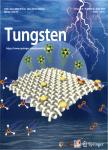Self-supported transition metal oxide electrodes for electrochemical energy storage
作者机构:State Key Lab of Heavy Oil ProcessingInstitute of New EnergyCollege of Chemical EngineeringChina University of Petroleum(East China)Qingdao 266580China
出 版 物:《Tungsten》 (钨科技(英文))
年 卷 期:2020年第2卷第4期
页 面:337-361页
核心收录:
学科分类:0808[工学-电气工程] 0817[工学-化学工程与技术] 0806[工学-冶金工程] 08[工学] 0805[工学-材料科学与工程(可授工学、理学学位)] 0703[理学-化学] 0702[理学-物理学]
基 金:This work was finally supported by the National Nature Science Foundation of China(Grant No.21975287) the start-up funding support of China University of Petroleum(East China),Taishan Scholar Project(Grant No.ts201712020) Technological Leading Scholar of 10000 Talent Project(Grant No.W03020508) Shandong Provincial Natural Science Foundation(Grant No.ZR2018ZC1458)
主 题:Self-supported electrodes Transition metal oxides Metal-ion batteries Metal-air batteries Supercapacitors
摘 要:Electrode materials are of decisive importance in determining the performance of electrochemical energy storage(EES)***,the electrode materials are physically mixed with polymer binders and conductive additives,which are then loaded on the current collectors to function in real *** a configuration inevitably reduces the content of active species and introduces quite some undesired interfaces that bring down the energy densities and power *** viable solution to address this issue is to construct self-supported electrodes where the active species,for example transition metal oxides(TMOs),are directly integrated with conductive substrates without polymer binders and conductive *** this review,the recent progress of self-supported TMO-based electrodes for EES devices including lithium-ion batteries(LIBs),sodium-ion batteries(SIBs),aluminum-ion batteries(AIBs),metal-air batteries,and supercapacitors(SCs),is discussed in great *** focused attention is firstly concentrated on their structural design and controllable ***,the mechanism understanding of the enhanced electrochemical performance is ***,the challenges and prospects of self-supported TMO-based electrodes are summarized to end this review.



